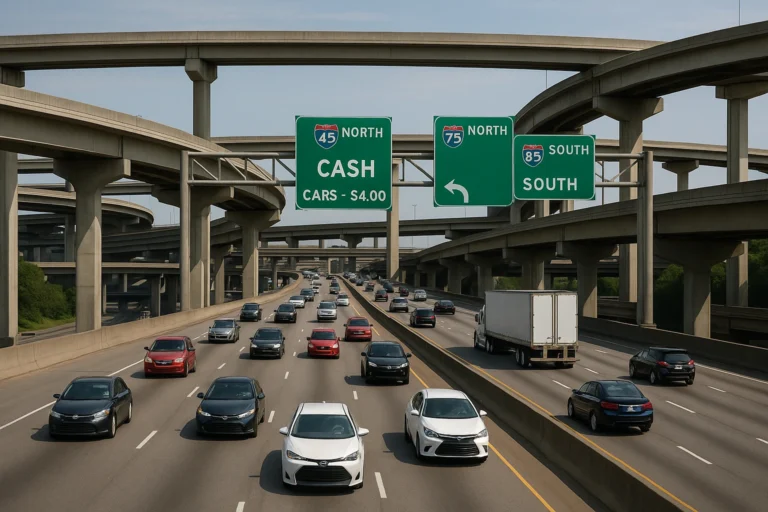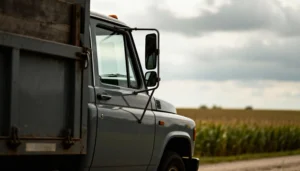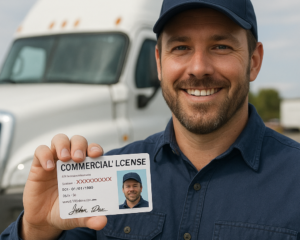The International Bridge, Tunnel and Turnpike Association (IBTTA), headquartered in Washington, D.C., is urging lawmakers to adopt user-based funding models — including more tolling — as a way to modernize and maintain America’s transportation network.
The U.S. transportation system is facing a growing challenge: the widening gap between available funding and the actual costs of maintaining and upgrading critical infrastructure. With federal revenues shrinking, particularly from the long-stagnant gas tax, policymakers and industry leaders are searching for sustainable solutions.
In this context, the International Bridge, Tunnel and Turnpike Association (IBTTA), based in Washington, D.C., has submitted a formal proposal to the U.S. Department of Transportation (USDOT), calling for greater reliance on user-based funding models, especially tolls.
A key player in U.S. transportation policy
IBTTA is an international trade association representing toll facility operators, roadway authorities, and service providers across the globe. From its Washington headquarters, the association advocates before Congress, USDOT, and other government agencies, positioning tolling as a reliable and proven tool to finance transportation infrastructure.
According to IBTTA data, 132 toll operators across 33 states handle nearly 10 billion transactions each year, generating more than $25 billion annually. These revenues are reinvested directly into roads, bridges, and tunnels, creating a self-sustaining cycle of infrastructure upkeep and modernization.
The decline of the gas tax
For decades, the federal gas tax has been the backbone of the Highway Trust Fund. But that model is faltering. On one hand, the rapid growth of electric and hybrid vehicles is reducing fuel consumption, shrinking tax collections. On the other, Congress has failed to increase the gas tax in decades, leaving it eroded by inflation.
As a result, the U.S. faces a structural funding shortfall. IBTTA argues that the only long-term solution is to adopt a new paradigm: one in which those who use the infrastructure pay directly for it.

Why tolling?
In its submission to USDOT, IBTTA highlighted several advantages of tolling:
- Financial sustainability – Tolls provide a steady, predictable stream of revenue, insulated from political gridlock.
- Direct reinvestment – Funds go directly back into the road, bridge, or tunnel where they are collected.
- Technological efficiency – Electronic tolling and “open road” systems allow vehicles to pay without slowing down, cutting costs and improving traffic flow.
- User equity – The people who use the infrastructure most contribute the most, instead of spreading the costs across all taxpayers.
IBTTA also pointed to advances in all-electronic tolling systems that eliminate traditional toll plazas and reduce congestion impacts.
Pushback and controversy
Despite these advantages, the idea of expanding tolling faces significant resistance. Critics argue that:
- Truckers and freight carriers would see increased operating costs, driving up logistics expenses and consumer prices.
- Low-income drivers would be disproportionately affected, as a greater share of their income would go toward tolls.
- Tolling could accelerate the privatization of public roads, raising concerns about lack of transparency and unchecked price hikes.
These criticisms reflect the tension between the pressing need to fix America’s roads and bridges and the political and social costs of asking drivers to pay more directly.
The federal policy context
The IBTTA’s call comes as USDOT is preparing its next surface transportation proposal, which will shape national priorities for infrastructure investment and funding mechanisms in the years ahead.
For IBTTA, this is the moment to elevate “pay-per-use” models as credible alternatives to the eroding gas tax. In the association’s words: “More tolling means more resources for safer roads, stronger bridges, and modern tunnels.”
Looking ahead: the future of U.S. road funding
The tolling debate ties into a larger national question: how to fund infrastructure in a country with aging highways, structurally deficient bridges, and rapidly expanding mobility needs.
Some stakeholders call for greater federal spending, while others push for public-private partnerships. IBTTA maintains that tolling will be an inevitable component of a fair and sustainable funding system.
As congestion worsens and supply chains grow more complex, the expansion of tolling is likely to be at the center of America’s transportation policy debates in the coming years.

The best Christmas gifts for a trucker
Find the best Christmas gifts for truck drivers with these options based on their needs and personality. The holiday season is often a challenging time

Cannabis reclassification could affect the trucking industry, ATA warns
President Donald Trump signed an executive order directing his administration to reclassify cannabis into a less restrictive federal category, could this affect the trucking industry?

ATA Calls for Tougher Penalties Against Cargo Theft
Cargo theft has moved from being an industry nuisance to a national concern. The American Trucking Associations (ATA) warned Congress that the crime is draining billions from the U.S. supply chain, disrupting logistics operations, endangering drivers, and increasingly intersecting with organized crime and national security threats—prompting renewed calls for stronger federal penalties and coordinated enforcement.

The first Bipartisan Trucking Caucus
Led by a group of lawmakers who come together to pursue shared policy goals, the caucus will focus on the integrity, safety, and growth of

NDAA passed with new protections for truck drivers and military freight
Congress approved the National Defense Authorization Act, a key piece of legislation that includes provisions aimed at protecting truck drivers. Congress approved this week the

California to Reissue Contested Commercial Driver’s Licenses, Challenging Federal Pressure
California plans to reissue contested commercial driver’s licenses (CDLs), reopening a regulatory dispute with federal authorities and raising key questions for the U.S. trucking industry.
